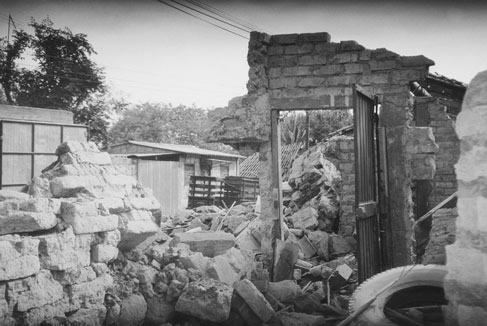

Latin America and the Caribbean
 |
 |
| International
Strategy for Disaster Reduction Latin America and the Caribbean |
Newsletter
ISDR Inform - Latin America and the Caribbean |
 |
|
Partners
in Action
|
|
FEMICA: 10th Meeting of the Central American Network for Decentralization and Municipal Strengthening
It is also worth mentioning the participation of congressmen, officials from both central governments and decentralized bodies, members of the academic sector, private organizations, multilateral cooperation agencies and regional organizations. In addition to the delegates from the six Central American countries, a number of speakers and representatives from Venezuela, Colombia, Peru, Ecuador, Brazil, Mexico, Switzerland and the United States participated in this meeting. 
The overall goals of the event were met and its participants were provided with: •
Concepts, information and practical methods that will allow them to address
risk issues at the municipal level; and, A quick review of the discussions and comments made during the working sessions, allows us to highlight the following aspects: •
Although organization and training are important elements for local risk
management, it is also necessary for municipal governments to integrate
this issue as an essential part of their overall management; and, •
number of experiences have shown that integrated risk management –which
requires congruence between scientific-technological aspects, political
will and The experience gained shows that public services are one of the most affected sectors by natural disasters. In this sense, water and sanitation systems must be considered an integrated part of risk. This may raise some challenges such as: (a) the settlement of population groups in disaster-prone areas also puts service infrastructures at risk; and, (b) the provision of basic services in secure areas also constitutes a tool for land use. Risk management represents a strategy for municipal development, as it is a social process aimed at reducing and controlling risk in a permanent manner. This must be consistent with sustainable human, economic and environmental guidelines. Therefore, risk management requires the establishment of systems or organizational and institutional structures, as well as broad-based civil participation. It has been proven that vulnerability reduction has not been part of the official agenda or the management priorities of political authorities. This, despite the fact that risk management is not only about scientific issues or civil participation, but also a matter of political management; that is, governance. Vulnerability reduction must be a specific goal of development planning. This entails the following: (a) reformulate existing policies; (b) update the national legislation;(c) develop an integrated concept of information systems; (d) strengthen capacity-building processes; (e) foster civil participation; and, (f) establish a financial strategy. Along these lines, risk management must be an ongoing State strategy and, as such, it must involve at least 4 types of public policies: (a) identification of existing risks; (b) risk reduction; (c) disaster management; and, (d) risk transfer (which is related to financial protection). Finally, as part of the planning of our next meeting, it was announced that these issues will be further discussed during the 11th Meeting of the Central American Network for Decentralization and Municipal Strengthening, entitled: "Effectiveness and Transparency: Challenges of Local Governments.” This meeting will be held in 2004. It
was rewarding for the Federation of Municipalities of the Central American
Isthmus to successfully have reached the goals of this meeting. This contributed
to the development and strengthening of municipalities throughout the
region. |
| © UN/ISDR |